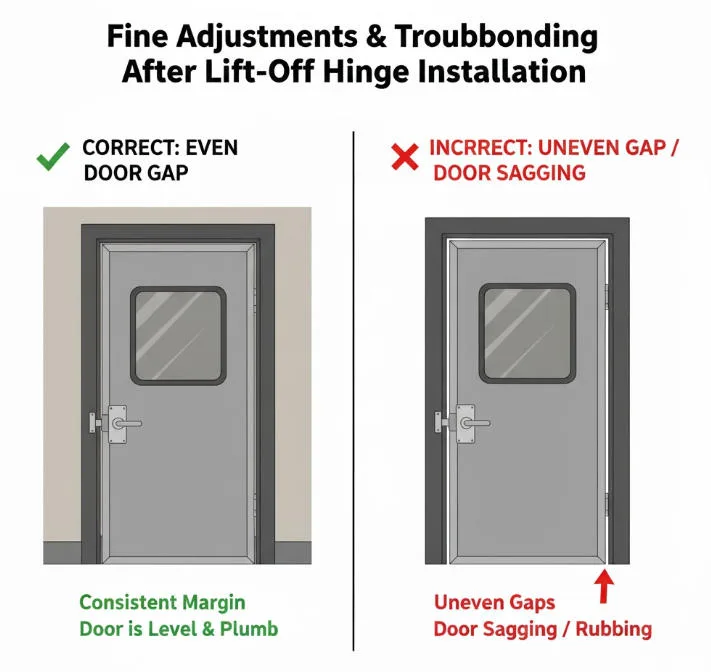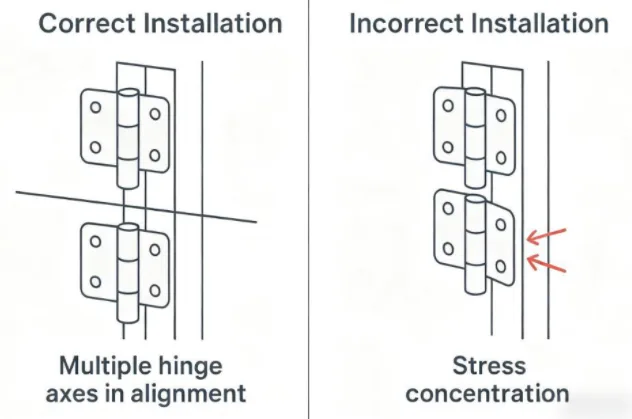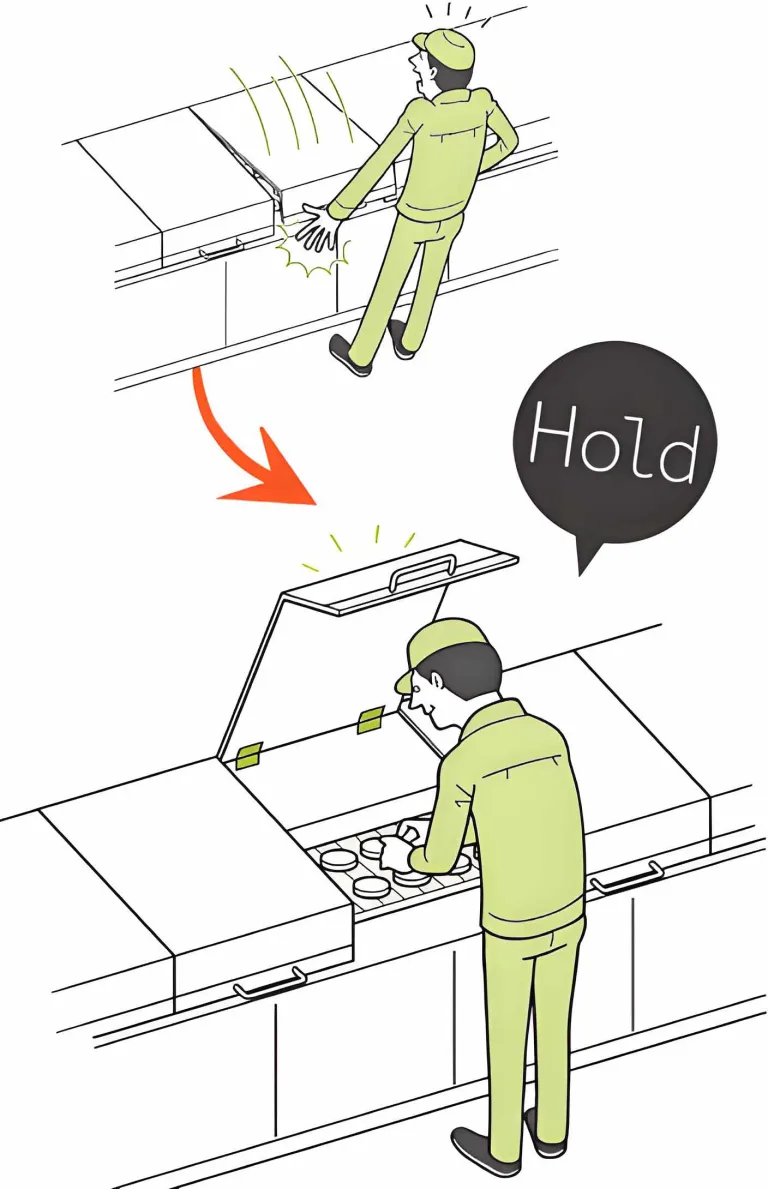Torque Hinge Selection Guide: Calculating the Right Torque
Torque hinges (also called friction hinges) introduce controllable damping and holding torque within a rotational joint. They allow a cover, display, or door to hold position at any angle without spring-back, and ensure consistent feel during opening/closing.
In laptops, industrial equipment service doors, medical display arms, and precision instruments, these hinges directly affect HMI quality, lifetime, and safety.
This article provides practical torque calculation methods, a selection workflow, and material/process essentials, and includes related technical standard numbers to speed alignment during drawing reviews and supplier communication.
Basic Principles of Torque Hinges
Definition and Physical Meaning of Torque
Torque T: the product of force and moment arm. Unit: N·m (see ISO 80000-4:2019, quantities and units in mechanics).
In a hinge structure, gravity generates a gravitational moment via the perpendicular distance to the rotation axis; the hinge’s internal friction pair produces a friction torque. The balance between the two determines whether the part holds position.
Working Mechanism of Friction Hinges
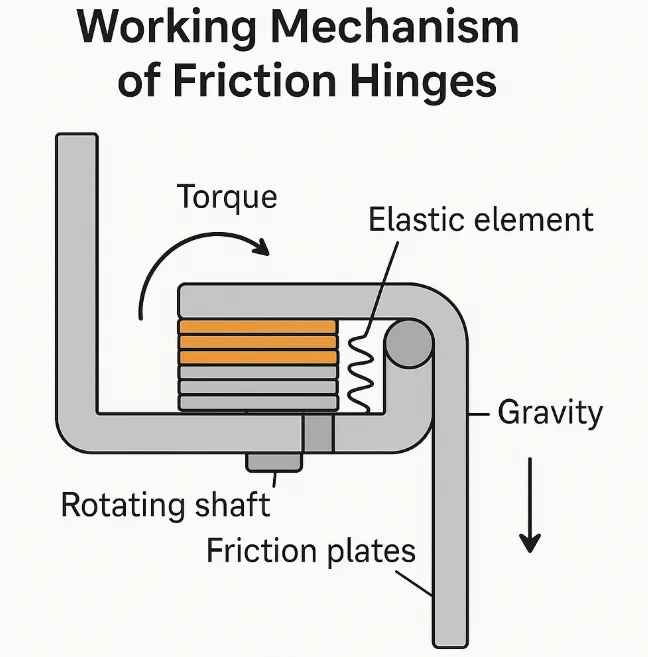
Internally, stacked friction plates or preloaded elastic elements are common, forming constant or near-constant damping.
Holding angle: when friction torque ≥ external disturbance torque (gravity, vibration, operating force), the angle is stably “locked.”
Influencing factors: friction material pairing (stainless steel/phosphor bronze/engineering plastics), surface roughness (Ra), preload, and wear resistance.
Relevant tests:
- ISO 4287/4288 (surface roughness parameters and assessment)
- ASTM G99 (pin-on-disk wear test, evaluating wear trends of friction pairs)
Classification and Characteristics of Torque Hinges
By Structural Form
- Unidirectional torque hinge: provides main damping in one rotational direction; suitable for flip covers and service doors.
- Bidirectional torque hinge: similar damping in both directions; suitable for displays and multi-angle holding.
- Indexed/step-positioned: “clicks” at set angles; used for repeatable positioning or assembly datum alignment.
- Non-indexed: continuous damping over the full stroke with smooth feel.
By Application Field
- Electronics: laptops/tablets/automotive center consoles; emphasizes lightweight, feel, and durability.
- Medical/industrial: display arms, service doors, shielding covers; emphasizes stability and environmental robustness.
- Furniture/doors: cabinet doors, soft-drop lids; emphasizes safety and low noise.
Type Performance Comparison
| Type | Typical torque range* | Angle adjustability | Life (cycles) | Suitable environments |
|---|---|---|---|---|
| Unidirectional | 0.2–8 N·m | Medium | 10k–50k | General, covers |
| Bidirectional | 0.1–6 N·m | High | 20k–100k | Displays/HMI |
| Indexed | 0.5–10 N·m | Stepped | 20k–50k | Industrial positioning |
| Non-indexed | 0.1–5 N·m | High | 20k–100k | Consumer electronics |
* Values reflect common industry ranges. Use supplier catalogs and prototype testing for exact values (life and distributions reference the grading approach in ANSI/BHMA A156.1 for door hinges; consumer electronics suppliers often provide their own life specs).
Key Parameters for Torque Hinge Selection
Basic Quantities Needed for Design
- Weight W: in newtons (N). If mass m is given, convert using W = m×g, with g ≈ 9.81 m/s².
- Moment arm L: perpendicular distance from the center of gravity to the rotation axis (meters).
- Angle θ: angle relative to the direction of gravity; determines the gravitational moment component.
- Number of hinges n and their distribution: determines the torque share per hinge and support stability.
- Use environment: vibration, temperature/humidity, dust, chemical exposure.
Torque Calculation Formula
Basic:
T_req = W × L × sin θ
Multiple hinges sharing load (equal-share assumption, symmetric installation):
T_per = T_req / n
Common pitfalls
- Using mass directly as weight, leading to underestimated torque.
- Taking L as the geometric center rather than the perpendicular distance from the center of gravity to the axis.
- Ignoring angle variation: θ changes over the stroke; the peak often occurs near horizontal.
- Assuming perfect load sharing while ignoring assembly bias and friction differences.
Safety Factor
Recommended safety factor SF = 1.2–1.5.
T_design = SF × T_req
The design torque defines the selection range; feel and holding must be verified by prototype testing.
Torque measurement and calibration can reference ISO 6789 (hand torque tools calibration) and ISO/IEC 17025 (laboratory calibration competence).
Calculation Examples for Different Applications
All scenarios use weight W (N), moment arm L (m), and angle θ (°). Peak conditions are given, and SF = 1.3 is applied to obtain design torque.
Laptop Display

Conditions: display module mass 0.45 kg → W = 0.45 × 9.81 = 4.415 N; L = 0.10 m from center of gravity to axis.
Key angle: around horizontal, sin θ ≈ 1.
Required torque: T_req = 4.415 × 0.10 = 0.4415 N·m.
Design torque: T_design = 0.4415 × 1.3 = 0.574 N·m.
Two hinges, equal share: per hinge target T_per ≈ 0.29 N·m.
Optimization: shape the friction–angle curve (lower at start, higher near horizontal, tapering later) to improve feel.
Industrial Equipment Service Cover
Conditions: cover mass 3.0 kg → W = 29.43 N; L = 0.18 m.
Horizontal segment: sin θ = 1.
Required torque: T_req = 29.43 × 0.18 = 5.30 N·m.
Design torque: T_design = 6.89 N·m.
Two hinges: per hinge ≈ 3.45 N·m.
Scenario notes: with high-frequency vibration or outdoor dust/salt spray, choose higher preload and more corrosion-resistant materials (see materials and standards below).
For environments with high-frequency vibration or outdoor dust/salt spray, it is recommended to refer to IEC 60068-2-6 or IEC 60068-2-64 for vibration verification; conduct salt spray corrosion testing according to ISO 9227; and, if dust protection is required, follow IEC 60068-2-68.
Medical Display Arm (Multi-Joint)
Joint A (near base): carries full arm mass and peripherals.
Joint B (end fine adjustment): carries the display portion.
Stacking approach: model each joint independently and superimpose peripheral effects; take the local peak for each joint.
Example: end display 2.5 kg → W = 24.53 N, L = 0.12 m, horizontal segment T_req = 2.94 N·m, T_design = 3.82 N·m.
Medical environment recommendations: material–cleaner compatibility, low particle emission, life ≥ 50k–100k cycles; perform temperature cycling and chemical wipe tests (see IEC 60068-2-14 temperature cycling).
Effects of Materials and Manufacturing Processes on Torque
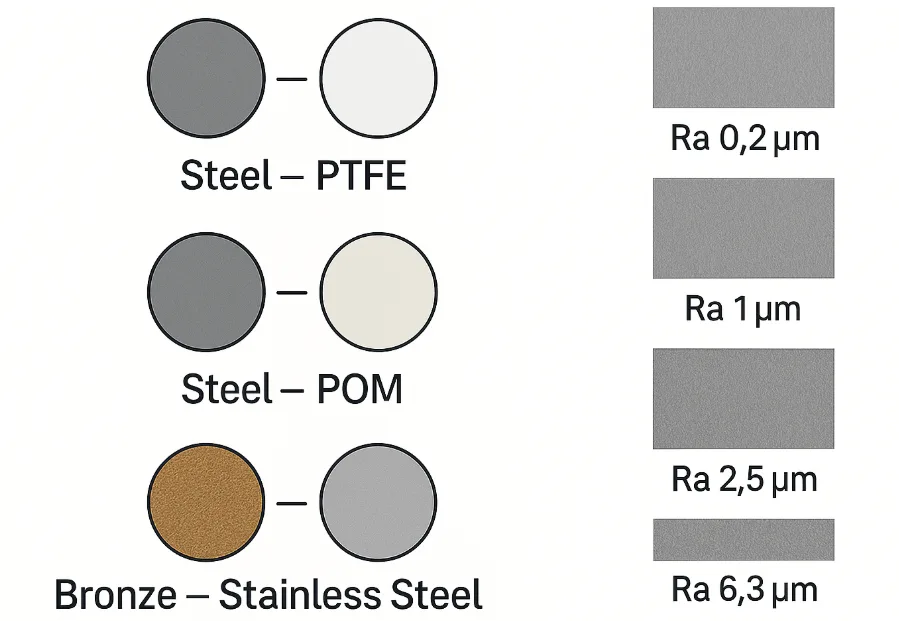
Common Materials and Characteristics
| Material | Advantages | Risks/Notes | Related standards |
|---|---|---|---|
| Stainless steel (SUS304/316) | Strength + corrosion resistance | Galling wear, higher cost | ISO 9227 salt spray; ISO 3506 fasteners |
| Aluminum alloys (6061/6063) | Lightweight, extrudable | Low surface hardness; needs anodizing | ISO 7599 anodizing; ISO 2081 Zn plating (steel) |
| Engineering plastics (POM/PA+GF/PTFE) | Low friction, quiet | Thermal drift, creep | UL 94 flammability; supplier friction data |
Friction pairings must be stable: steel–PTFE, steel–POM, phosphor bronze–stainless steel, etc.
Corrosion risk: for outdoor or chemical settings use 316L, hard anodic coatings, or powder coating; conduct salt spray and cyclic damp heat tests.
Manufacturing and Assembly
- Surface roughness: friction plates recommended Ra 0.2–0.8 μm for stable friction.
- Clearance and coaxiality: control deviations to avoid one hinge “overworking.”
- Torque consistency: incoming inspection + comparison before/after life testing; gages traceable per ISO 6789 or via ISO/IEC 17025 accredited labs.
Selection Workflow and Engineering Recommendations
Quick Selection Steps (ready to paste into design checklists)
- Define installation orientation, rotation range, and peak-angle condition.
- Calculate T_req = W × L × sin θ peak.
- Set SF and obtain T_design.
- Based on hinge count and layout, obtain per-hinge target T_per.
- Choose hinge model(s) whose torque range/curve shape matches (uni-/bi-directional, indexed/non-indexed).
- Prototype verification: feel, holding, backlash, temperature drift, and life.
- Record measured vs. designed values and write back to BOM and 2D/3D annotations.
Common Issues and Solutions
- Torque too high, operation feels heavy
Reduce preload; choose an angle-dependent curve; add assist springs/gas struts. - Torque too low, sagging or spring-back
Increase torque grade; add hinges; optimize center of gravity or shorten moment arm. - Temperature variation causes feel drift
Use low-temp-drift friction pairs; verify per IEC 60068-2-1/-2 (low/high temperature) and -2-14 (temperature cycling). - Corrosion/cleaner effects
Use 316L, hard anodizing, or electroless nickel; verify per ISO 9227; run material compatibility tests with cleaners.
FAQ (Structured-Data Friendly)
Q1: Use mass or weight during selection?
Use weight W (N). If you have mass m (kg), convert with W = m×g.
Q2: Why does the peak often occur near horizontal?
Because sin θ equals 1 at θ = 90°. At this point, gravity’s moment arm about the axis is maximal, and the torque reaches its peak.
Q3: Do two hinges share load perfectly equally?
Not perfectly. Assembly bias and friction differences lead to unequal sharing. Leave safety margins in selection and tolerances.
Q4: How to balance “light feel” and “strong holding”?
Use an angle-dependent torque curve or a composite scheme (friction hinge + gas strut/torsion spring) to provide higher holding torque at critical angles.
Q5: How to prevent corrosion for outdoor equipment?
Choose 316L or hard anodizing/electroless nickel; conduct ISO 9227 salt spray; add cyclic damp heat and UV aging if needed.
Conclusion
Calculate first, then verify.
Use T = W × L × sin θ to find the peak; use SF = 1.2–1.5 to lock in design torque; select structural type and materials based on the scenario.
Write the angle–torque curve, life, and environmental tests into drawings and specifications. Build the validation plan around the standards above.
Do this, and covers won’t sag, screens will hold, maintenance will be safer, and mass production will be steadier.


